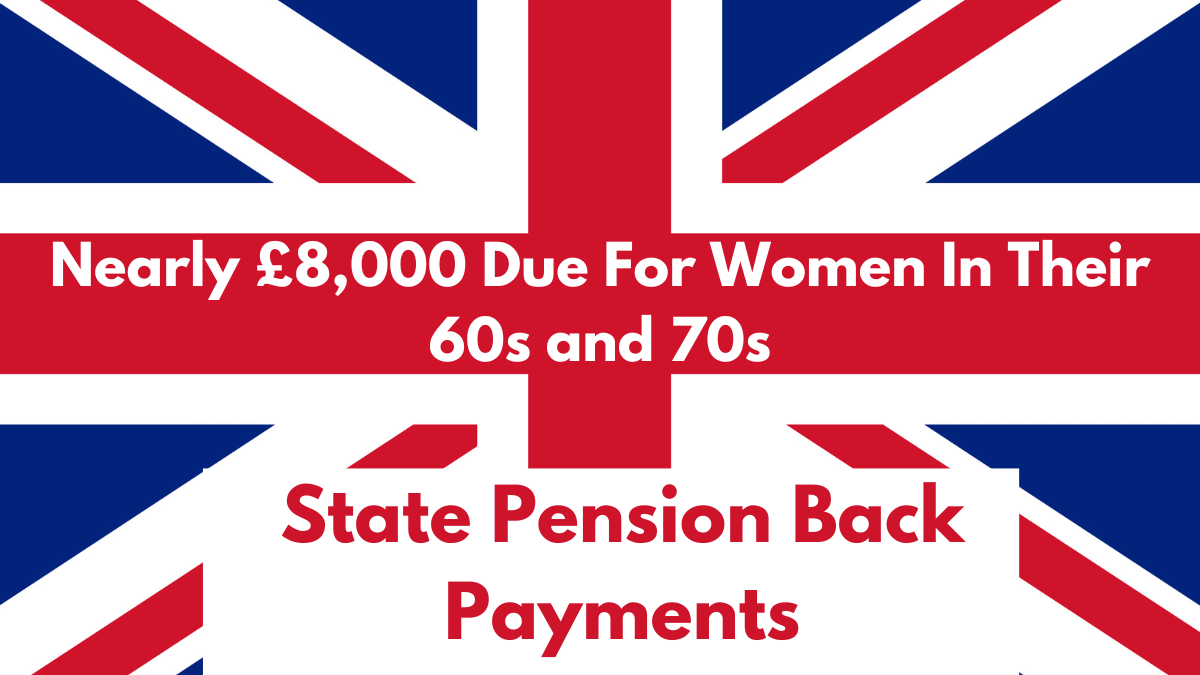HM Revenue and Customs (HMRC) has recently taken significant steps to address State Pension underpayments, particularly affecting older individuals, predominantly women. Over 370,000 letters have been dispatched, urging recipients to review their State Pension entitlements, as discrepancies in historical records may have resulted in lower payments than they are owed.
The Department for Work and Pensions (DWP) has revealed that the average arrears payment for affected individuals stands at approximately £7,859. These underpayments primarily stem from missing Home Responsibilities Protection (HRP) records, which have led to miscalculations in National Insurance contributions.

How the State Pension Errors Came to Light
In 2022, the DWP identified inconsistencies in National Insurance records related to HRP, a scheme introduced to safeguard the State Pension entitlements of parents and caregivers. These discrepancies impacted both individuals who had already reached State Pension age and those below it.
To rectify these errors, the Legal Entitlements and Administrative Practice (LEAP) corrections initiative was launched by DWP and HMRC. This program aims to identify affected individuals, update their records, and ensure that they receive both back payments and correctly adjusted State Pension amounts going forward.
Progress in Addressing the State Pension Shortfall
Recent data highlights that nearly 493,813 individuals have accessed the GOV.UK online tool to check if they are missing HRP credits. Moreover, the government has committed to processing back payments by the end of the year for those impacted by these discrepancies.
As of September last year, the HMRC has handled 37,289 applications from people over State Pension age, along with 5,428 applications from individuals younger than 66. To date, DWP has issued a staggering £42 million in arrears payments.
| Key Statistics | Figures | |
|---|---|---|
| Letters Sent | 370,000+ | |
| Average Arrears Payment | £7,859 | |
| Applications Processed (Over State Pension Age) | 37,289 | |
| Applications Processed (Under 66) | 5,428 | |
| Total Online Tool Users | 493,813 | |
| Estimated Total Underpayment | £300m – £1.5bn | |
| Total Arrears Paid | £42 million | |
| For More Details Visit Here | ||
Understanding Home Responsibilities Protection (HRP) Underpayments
HRP was initially introduced to ensure that parents and caregivers did not lose out on their State Pension due to gaps in their National Insurance (NI) contributions. However, errors in the recording of HRP have led to significant underpayments, estimated between £300 million and £1.5 billion.
What Is HRP and Who Qualifies?
HRP was a mechanism designed to protect the pension rights of those who took time off work to care for children or dependents. In April 2010, HRP was replaced by National Insurance credits. The current corrections process focuses on identifying individuals who should have received HRP between 1978 and 2010 but do not have it reflected in their records.
Who May Be Eligible for HRP?
Individuals may still be able to claim HRP for full tax years (April 6 – April 5) between 1978 and 2010 if they:
- Claimed Child Benefit for a child under 16.
- Lived with a partner who claimed Child Benefit on their behalf.
- Received Income Support while caring for a disabled or sick person.
- Provided care for someone receiving specific disability benefits.
Additionally, between 2003 and 2010, HRP may apply to those who were:
- Foster carers.
- Kinship carers (in Scotland, caring for a friend or relative’s child).
How to Check and Apply for HRP Corrections
Before Using the Online HRP Tool
Before beginning the HRP check, individuals need to confirm whether there are gaps in their National Insurance records. If unsure, they can select “Do not know” and will be guided on obtaining the necessary information.
How to Use the HRP Online Check Tool
The government has provided an online HRP check tool on GOV.UK, where individuals can verify their eligibility. The process involves answering a series of questions related to past claims for Child Benefit, caregiving, or Income Support.
Automatic Eligibility for HRP
Most people were automatically credited with HRP if they:
- Received Child Benefit in their name for a child under 16 and provided their National Insurance number.
- Received Income Support while exempt from work registration due to caregiving responsibilities.
HRP Transfer Options for Partners
For those who reached State Pension age before April 6, 2008, HRP cannot be transferred. However, partners who claimed Child Benefit may transfer qualifying HRP years (from April 1978 to April 2010) to their spouse or partner, provided the recipient requires them for their pension calculations.
Special Considerations for Specific Groups
Married Women or Widows
Certain restrictions apply to married women or widows regarding HRP eligibility:
- Those who opted for reduced-rate Class 1 National Insurance contributions (commonly known as the “small stamp”).
- Those who did not contribute to Class 2 National Insurance while self-employed.
Caregivers for Sick or Disabled Individuals
Those who provided at least 35 hours per week of care between 1978 and 2002 for individuals receiving:
- Attendance Allowance
- Disability Living Allowance (middle or highest rate for personal care)
- Constant Attendance Allowance
must ensure they claim HRP, as long as the individual being cared for received benefits for at least 48 weeks per tax year.
Foster Carers and Kinship Carers
From 2003 to 2010, individuals who served as foster carers or kinship carers and met the following conditions may still apply for HRP:
- Did not claim Child Benefit.
- Were not engaged in paid employment.
- Earned below the threshold for State Pension qualification.
Frequently Asked Questions (FAQs)
1. Who should check for missing HRP?
Anyone who took time off work between 1978 and 2010 to care for children or dependents should verify their HRP records using the online tool.
2. How do I apply if I am missing HRP?
Visit GOV.UK and use the HRP online check tool. If eligible, follow the instructions to apply for corrections.
3. Can I receive back payments if I am already past State Pension age?
Yes, eligible individuals will receive arrears payments for any missing HRP entitlements, even if they have reached State Pension age.
4. What happens if I don’t check my HRP record?
Failure to check could mean missing out on potential pension corrections and financial compensation for past underpayments.
5. When will all back payments be issued?
The government has committed to completing all payments by the end of the year for those who qualify.
Ensuring you receive the correct State Pension entitlement is crucial. If you believe you may have been underpaid due to missing HRP, take action now by verifying your records and applying for any necessary corrections.
For More Information Click Here
